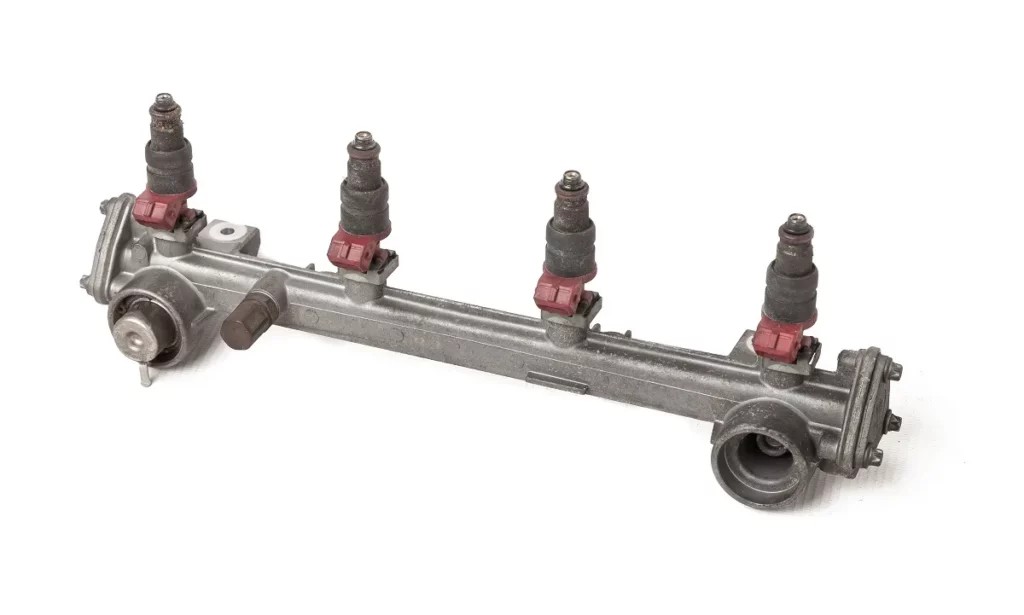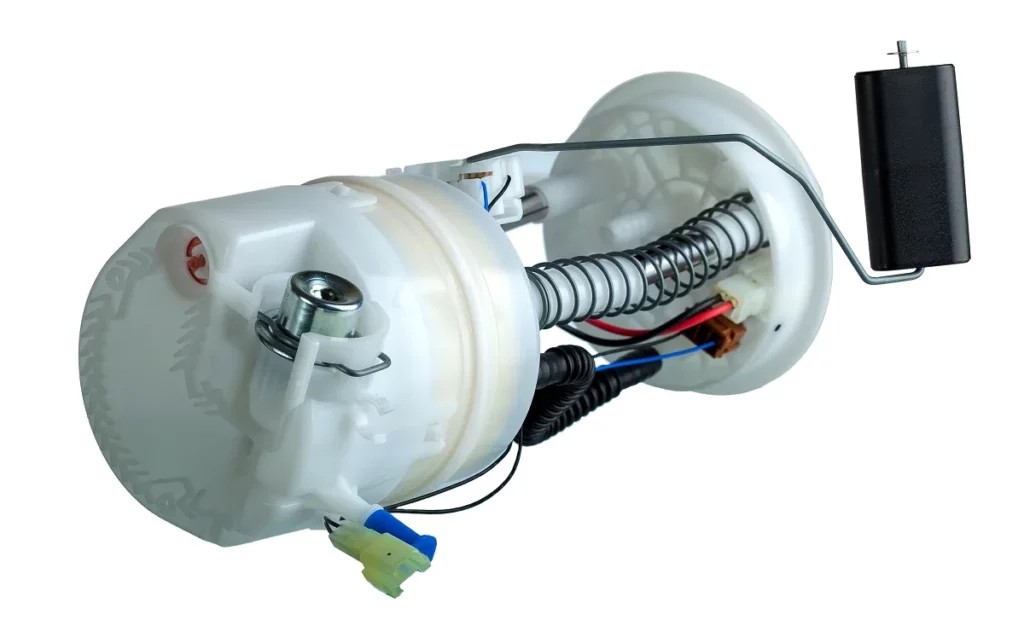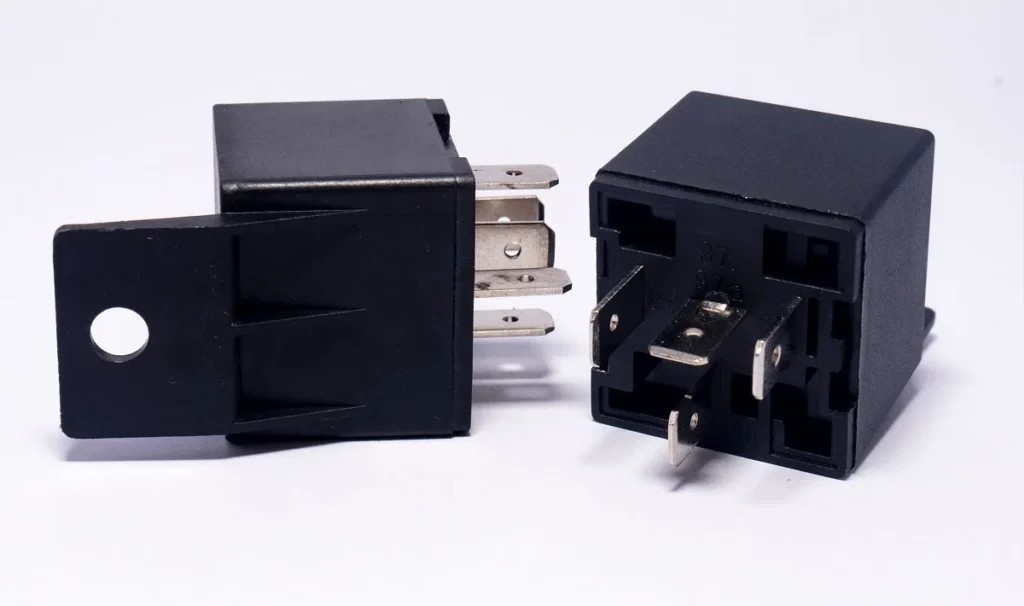Modern vehicle engines rely on precise operation within specific parameters for optimal performance and efficiency. This is especially true for fuel pressure. Engines manufactured in recent decades are engineered to receive fuel at a very specific and, crucially, stable pressure. To monitor this, vehicles are equipped with a fuel pressure sensor located on the fuel rail. When this sensor malfunctions or detects irregularities, it can trigger the P0191 diagnostic trouble code (DTC) and illuminate your check engine light.
This comprehensive guide, brought to you by the automotive experts at autelfrance.com, will delve into the intricacies of the P0191 trouble code, also known as the OBDII DTC P0191. We will explore the underlying causes, recognizable symptoms, effective diagnostic procedures, and reliable solutions to address this fault, ensuring your vehicle’s fuel system operates as intended.
 fuel rail issue causing p0191 code
fuel rail issue causing p0191 code
A typical fuel rail system where issues can lead to a P0191 DTC.
Understanding the P0191 Code: Fuel Rail Pressure Sensor ‘A’ Circuit Range/Performance
The OBD-II diagnostic code P0191 is defined as “Fuel Rail Pressure Sensor ‘A’ Circuit Range/Performance.” Essentially, this DTC indicates that the fuel rail pressure sensor, designated as “A,” is reporting a signal voltage that falls outside the expected or normal operating range. This deviation can manifest as either a pressure reading that is too low or excessively high compared to the manufacturer’s specified parameters. The “Range/Performance” aspect of the code signifies that the issue isn’t necessarily a complete sensor failure, but rather an indication that the sensor’s output is inconsistent or inaccurate within its operational spectrum.
Common Causes of the P0191 DTC
Several factors can contribute to the triggering of the P0191 fault code. Most of these issues are directly or indirectly related to the fuel rail pressure sensor itself or to conditions causing abnormal fuel pressure within the system. Here’s a breakdown of the most prevalent causes:
- Abnormal Fuel Pressure: This is a primary trigger and often the root of the P0191 code. It encompasses both low and high fuel pressure scenarios. Underlying causes can include a malfunctioning fuel pressure regulator (in systems equipped with one upstream of the sensor) or a failing fuel pump struggling to maintain adequate pressure within the fuel delivery system.
- Fuel Rail Pressure Sensor Failure: This sensor is crucial for providing accurate fuel pressure readings to the engine control unit (ECU). Over time, the sensor can become contaminated by fuel impurities or simply degrade due to age and operational stress. While a fuel rail pressure sensor is designed for longevity, factors like low-quality fuel or engine-related problems can accelerate its failure.
- Vacuum Leaks: While seemingly unrelated, vacuum leaks can indirectly contribute to the P0191 code. A decrease in manifold vacuum pressure can prompt the ECU to adjust the air-fuel ratio. In some cases, this adjustment can lead to unintended fluctuations or increases in fuel rail pressure, triggering the sensor’s out-of-range detection.
- Wiring Harness Issues: The wiring and connectors associated with the fuel rail pressure sensor are susceptible to damage, particularly due to heat exposure. Located near or directly on the fuel rail, these components endure constant temperature cycling. Over time, this can lead to wiring insulation becoming brittle, connectors corroding, or wires breaking. Such electrical issues can disrupt the sensor’s signal, causing voltage readings to fall outside the acceptable range and consequently setting the P0191 code.
- Faulty Engine Control Module (ECU): Although less frequent, a malfunctioning ECU can also be responsible for a P0191 code. ECU failures can stem from internal software glitches, physical damage due to floods or accidents, or electrical overloads. However, ECU failure should be considered as a last resort diagnosis. Before suspecting the ECU, it’s advisable to check for any technical service bulletins or recalls related to your vehicle that might indicate known ECU-related issues.
The Impact of a Failing Fuel Rail Sensor
The fuel rail pressure sensor acts as a critical information provider to the engine’s computer. When this sensor malfunctions, it feeds inaccurate data to the ECU. This discrepancy between the actual fuel pressure and the pressure values the ECU uses for calculations can disrupt critical engine functions. The ECU relies on accurate fuel pressure data to precisely manage fuel injection timing and ignition timing. Incorrect information can lead to a cascade of issues affecting engine performance, fuel efficiency, and overall drivability.
Recognizing the Symptoms of a P0191 Fault Code
Identifying the symptoms associated with a P0191 code is crucial for initiating a timely and accurate diagnosis. Recognizing these signs early can prevent further complications and potential damage. Here are the most commonly observed symptoms:
 fuel pump assembly issue can cause p0191 error
fuel pump assembly issue can cause p0191 error
Fuel pump problems can lead to insufficient fuel pressure and trigger the P0191 code.
- Check Engine Light Illumination: The most immediate and universal symptom of a P0191 code is the activation of the check engine light (CEL) on your vehicle’s dashboard. When the ECU detects a P0191 fault, it triggers the CEL to alert the driver to a potential issue. In the case of the P0191, which is generally considered a moderate severity code, the CEL will typically remain steadily illuminated rather than flashing. A flashing CEL usually indicates a more critical issue requiring immediate attention.
- Reduced Engine Performance: Insufficient fuel pressure, often associated with a P0191 code, can directly translate to diminished engine performance. When the engine doesn’t receive the correct amount of fuel, combustion becomes less efficient. This can manifest as noticeable sluggishness, reduced acceleration, and an overall lack of power, especially during demanding driving situations like uphill climbs or overtaking. While reduced performance is a general symptom that can point to various issues, in the context of a P0191 code, it strongly suggests a problem within the fuel delivery system.
- Starting Problems: Fuel delivery issues are often directly linked to difficulties in starting the engine. A P0191 code can cause a range of starting problems, from extended cranking times (the engine taking longer than usual to start) to intermittent stalling, or in severe cases, the engine failing to start altogether. These symptoms arise because the engine requires a precise fuel-air mixture for successful combustion during startup. If the fuel pressure is erratic or insufficient due to a P0191 related issue, the engine may struggle to ignite and run smoothly, particularly during the initial starting phase.
Diagnosing and Resolving the P0191 Code
Diagnosing the P0191 code effectively requires a systematic approach, starting with basic checks and progressing to more in-depth testing of the fuel system components. A comprehensive diagnostic process should include examining the fuel rail pressure sensor, its associated wiring, and other key components within the fuel delivery system, such as the fuel pump and vacuum lines. Essentially, a thorough evaluation of the entire fuel delivery system is often necessary to pinpoint the root cause.
Step-by-Step Diagnostic Procedure
- OBD-II Scan Tool Retrieval: The first step in diagnosing a P0191 code is to use an OBD-II scan tool. This tool will not only confirm the presence of the P0191 code but also reveal any other related diagnostic trouble codes that might be present. The presence of additional codes can provide valuable context and help narrow down the potential problem area. Connect the scan tool to the OBD-II port, typically located beneath the dashboard on the driver’s side, and initiate a scan for trouble codes.
- Visual Inspection: A careful visual inspection is often an overlooked but crucial step in the diagnostic process. Begin by thoroughly inspecting the fuel rail pressure sensor itself and its wiring harness. Look for any obvious signs of damage, such as frayed or exposed wires, cracked connectors, or corrosion. Also, examine vacuum and fuel hoses for cracks, leaks, or loose connections. Ensure all hoses are properly secured with clamps. While visual inspection alone may not pinpoint the exact problem, it can often reveal readily apparent issues that can contribute to the P0191 code.
- Vacuum Pressure Testing: If a vacuum leak is suspected, a vacuum pressure test is essential. A vacuum tester is required for this procedure. Connect the tester to a suitable vacuum line on the engine. Start the vehicle and observe the vacuum reading at idle. A normal reading at idle should typically be around 14 inches of mercury (inHg). As you gradually increase the engine speed by pressing the throttle, the vacuum reading should increase, ideally reaching a maximum of around 22 inHg. Readings outside these ranges or unstable readings can indicate a vacuum leak.
- Wiring Harness and Sensor Circuit Testing: Testing the wiring harness and the fuel rail pressure sensor’s circuit requires a multimeter. First, identify the wires connected to the sensor. Typically, there will be a positive wire (often red), a ground wire (often black), and a signal wire. With the ignition key in the “accessory” position (engine off, but electrical system powered), use the multimeter to check for voltage at each wire. The positive wire should ideally show around 12 volts, the ground wire should read close to 0 volts, and the signal wire should typically carry around 5 volts as a reference voltage from the ECU. Further testing of the signal wire can be done by measuring the voltage with the key in the accessory position but the engine off. In this state, the signal wire voltage should typically be around 1 volt, indicating the sensor is at its base reading.
- Fuel Pressure Testing: Testing fuel pressure is a critical step in diagnosing P0191. First, listen for the fuel pump priming when the ignition key is turned to the “accessory” position. You should hear a brief whirring or humming sound coming from the fuel tank area as the fuel pump activates for a few seconds to pressurize the fuel system. If you don’t hear the pump, check the fuel pump relay and fuses. For a more precise fuel pressure measurement, use a fuel pressure gauge. Connect the gauge to the fuel rail test port, if available, or at an appropriate point in the fuel line as per your vehicle’s service manual. With the engine idling, the fuel pressure reading should typically be within the manufacturer’s specified range (often around 26 PSI for many fuel-injected vehicles). Consult your vehicle’s repair manual for the exact specified fuel pressure values. Also, check for fuel pressure drop-off. After the fuel pump primes, the pressure should remain relatively stable and not drop more than a few PSI per minute. Significantly high fuel pressure (above 60 PSI) could indicate a clogged fuel line or a faulty fuel pressure regulator. Discrepancies between the mechanical fuel pressure gauge reading and the fuel pressure value reported by the OBD-II scan tool’s live data function can point to a faulty fuel rail pressure sensor or an issue with the ECU’s interpretation of the sensor signal.
 fuel pump relay
fuel pump relay
A faulty fuel pump relay can cause intermittent fuel delivery issues related to P0191.
Addressing the P0191 Code: Repair Solutions
Once the diagnosis is complete and the root cause of the P0191 code is identified, appropriate repairs can be undertaken. Here are common solutions based on the likely causes:
- Sensor Cleaning or Replacement: In some cases, if the sensor is suspected to be contaminated with grime or corrosion, carefully cleaning the sensor’s electrical contacts might resolve the issue. Use a specialized electrical contact cleaner. However, more often than not, if the sensor is faulty, replacement is the most reliable solution. Ensure you use a high-quality replacement sensor that meets or exceeds OEM specifications for your vehicle.
- Fuel Pump Replacement: If fuel pressure tests indicate a failing fuel pump, replacement is necessary. A weak or failing fuel pump cannot consistently deliver the required fuel pressure, leading to P0191 and performance issues. When replacing the fuel pump, consider replacing the fuel filter as well, as a clogged filter can strain the new pump and shorten its lifespan.
- Fuel Pressure Regulator Replacement: If your vehicle is equipped with a fuel pressure regulator and testing indicates it’s malfunctioning (causing either excessively high or low pressure), replacing the regulator is the solution.
- Wiring Harness Repair or Replacement: If damaged wiring or connectors are found during inspection and testing, repair or replacement of the affected sections of the wiring harness is required. Ensure proper wiring connections and secure connectors to prevent future issues.
- Vacuum Leak Repair: Address any identified vacuum leaks by replacing cracked or damaged vacuum lines or hoses and ensuring all connections are airtight.
- ECU Diagnosis and Potential Repair/Replacement: If all other potential causes have been ruled out, and ECU malfunction is suspected, further ECU-specific diagnostics are needed. This may involve specialized testing or consultation with a qualified ECU repair specialist or dealership. ECU replacement is a last resort and can be costly, so thorough investigation of other possibilities is crucial.
- Fuel System Cleaning: If fuel contamination or clogging is suspected to be contributing to fuel pressure issues, a fuel system cleaning or flush might be beneficial. Fuel system cleaners can help dissolve deposits and improve fuel flow. In severe cases, professional fuel system cleaning services might be necessary.
Will the P0191 Code Clear Itself?
The P0191 DTC is generally not a code that will automatically clear on its own immediately after the problem is resolved. While some less severe codes might clear after a certain number of drive cycles without the fault reoccurring, the P0191 typically requires manual clearing using an OBD-II scan tool. Once you have addressed the underlying cause of the P0191 code and performed the necessary repairs, use a scan tool to erase the code from the ECU’s memory. If the repair was successful, the code should not return. If the P0191 code reappears after clearing, it indicates that the underlying issue persists, and further diagnosis is needed.
Driving with a P0191 Code: Is it Safe?
The drivability implications of a P0191 code can vary depending on the severity of the underlying issue. In cases of severe fuel pump failure, it may be impossible to drive the vehicle at all. If the issue is less severe, such as a slightly malfunctioning sensor or minor fuel pressure fluctuations, the vehicle might be drivable, but with noticeable reductions in performance. However, even if the vehicle appears drivable, it is generally not recommended to continue driving for extended periods with a P0191 code. Reduced fuel pressure can lead to inefficient combustion, potential engine damage over time, and decreased fuel economy. Furthermore, the underlying issue causing the P0191 code might worsen, leading to more significant problems or even a breakdown. It’s best to address the P0191 code promptly to ensure your vehicle’s long-term health and reliable operation.
Get Quality Parts to Fix Your P0191 Issues!
Now that you have a comprehensive understanding of the P0191 trouble code, its causes, symptoms, and solutions, you’re well-equipped to tackle this issue. However, to effectively resolve P0191 related problems, you’ll likely need quality replacement parts.
At eEuroparts, we offer a wide selection of genuine and OEM-quality parts, including fuel rail pressure sensors, fuel pumps, fuel filters, and more, all specifically designed for European vehicles. Use our vehicle selector tool to find guaranteed-fit parts for your specific make and model. Trust eEuroparts to provide the reliable components you need to restore your vehicle’s fuel system to optimal working order and eliminate that P0191 code for good!
